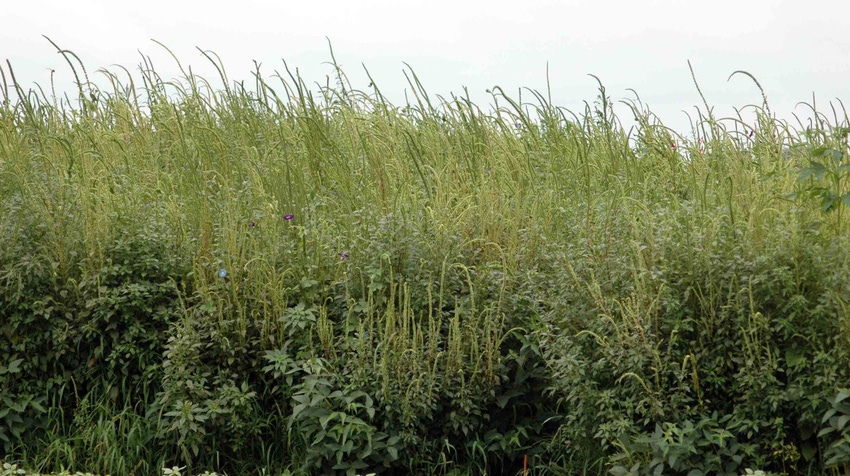August 26, 2016

The powerful weed Palmer amaranth has arrived in Ohio three ways: 1) presence of Palmer seed in the cotton-based feeds that are brought here from the south; 2) movement of contaminated combines from Palmer-infested areas of the south to Ohio; and 3) presence of Palmer seed in seed for conservation plantings (cover crop/CRP/wildlife/pollinator), which comes from states farther west such as Texas and Kansas.
The latter mechanism has gained some notoriety lately in Iowa, where Palmer amaranth was found in conservation plantings in four counties due to the planting of a likely contaminated seed mix. Mark Loux currently knows of at least two sites in Ohio where Palmer was introduced this way, one of which resulted in the contamination of several large fields along the Scioto river, and the other where the producer chose to destroy an extensive new conservation planting rather than risk spread to his crop fields.
It would be wishful thinking, to some degree, to think we could prevent any additional infestations. Among other things, this would require that every grain or animal producer, feed dealer, and equipment dealer be well-informed enough about this problem to take the appropriate steps: 1) stop importing combines from Palmer-infested areas; 2) stop using cotton-based feed products from these areas; and 3) test all cover crop seed for the presence of Palmer amaranth seed prior to planting.
All of us who provide information know the challenges of getting it to everyone that needs it, not the least of which is refusal of some growers to actually read vehicles such as the C.O.R.N. newsletter. We can hope that we continue to work toward these solutions before the state gets overrun with Palmer amaranth, but in the meantime here is your chance to be part of the solution now if you are making conservation plantings (assuming that you are one of the informed).
OSU, NRCS, and Ohio Department of Agriculture (ODA) all highly recommend that you take advantage of a free service provided to have any seed intended for conservation plantings tested for the presence of palmer amaranth seed at no charge.
That’s right – absolutely free, but the process requires an ODA representative to come to the site of seed storage and take an official sample (rather than sending seed directly to ODA). Contact David Simmons at ODA for more information at 614-728-6410 or [email protected].
In addition, we suggest thorough scouting of recently established conservation plantings for the presence of Palmer amaranth. Any plants found should be cut off below soil line, removed from the area, and composted or burned. Repeated mowing of infested areas between now and frost can also greatly reduce seed production. Be aware however that where plants are already producing mature seed (small black seed), mowing will cause further dissemination of seed and the possibility of a more widespread infestation next year, especially where the cover crops do not completely shade the ground.
You May Also Like




